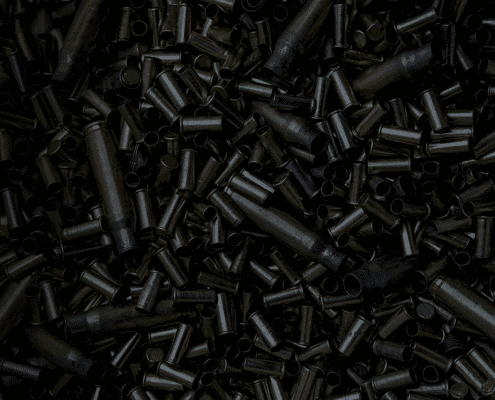 https://arquebus.uk/wp-content/uploads/2025/02/Picture-1-3.png
323
473
Rohan Harvey
https://arquebus.uk/wp-content/uploads/2022/02/Asset-1arquebus_logo.svg
Rohan Harvey2025-02-10 10:04:322025-02-10 15:23:07Arquebus Delivers Ballistic Examination Training in Montenegro
https://arquebus.uk/wp-content/uploads/2025/02/Picture-1-3.png
323
473
Rohan Harvey
https://arquebus.uk/wp-content/uploads/2022/02/Asset-1arquebus_logo.svg
Rohan Harvey2025-02-10 10:04:322025-02-10 15:23:07Arquebus Delivers Ballistic Examination Training in MontenegroThis is a guest article written by MSc Development and Security students from the University of Bristol’s School of Politics and International Studies as part of the Postgraduate Mentorship Scheme. Arquebus’ Project & Research Coordinator mentored the students on careers advice, CVs, cover letter writing, and assigned a group project. The students were given the task of researching and collaboratively producing a short article on a topic of their choice related to Small Arms and Light Weapons (SALW) control.
*
The Myanmar conflict marks the first time that homemade 3D-printed firearms have found their way into a major armed conflict. In 2021, a series of photographs surfaced on social media depicting members of the People’s Defence Force (PDF), the armed unit of the National Unity Government (NUG), holding a 3D-printed firearm (Hanrahan, 2021). The weapon pictured is known as the FGC-9, a 3D-printed semi-automatic, pistol-calibre carbine. The FGC-9 was originally designed by J-Stark, a member of an online-based, decentralised 3D-printed firearms network known as ‘Deterrence Dispensed’ and requires no regulated firearm components to manufacture.
The military junta has ample access to arms and ammunition, whilst the PDF has faced challenges in this regard. However, the introduction of 3D-printed firearms and the possibility of their mass production by rebel fighters (Eydoux, 2022) has the potential to close some of the capabilities gap between the belligerents. 3D-printed firearms are relatively easy to manufacture once the necessary pre-requisite materials and equipment have been acquired, which allows rebel groups to print them in multiple locations whilst avoiding being detected and intercepted by the junta.
The customisability of 3D-printed weapons, combined with their ability to be covertly produced through decentralised manufacturing are very important in this context, as these characteristics have allowed the PDF to exploit them as part of guerrilla warfare to use these weapons in training and hit-and-run missions. Understanding the possibilities presented by this new technological advance, this article outlines the potential implications of 3d printed SALW for conflict and security, discussing the potential impacts upon conflict and peacebuilding, the implications for the regulation of SALW, and the implications for state monopoly on the legitimate use of force.
Impact on Conflict and Peacebuilding
The rise of 3D-printed firearms in the Myanmar conflict does not directly pose a new security threat (Walther, 2015), but it has ramifications for existing peacebuilding efforts as it contributes to the uncontrolled proliferation of small arms and light weapons (SALW). Firearms do not solely cause conflict, but SALW affect security and development by providing easy access to violent approaches to resolving disputes. 3D-printed firearms provide further access to affordable, easily accessible, undetectable weaponry (Walther, 2015). However, the possible repercussions are not as clear-cut, given that metal components and ammunition are still needed for 3D printing, as witnessed in the conflict in Myanmar (Hanrahan, 2022; Basra, 2022), and many non-state armed groups (NSAGs) prefer military grade firearms manufactured under-license (Basra, 2022). In spite of these factors, the utility of 3D-printed firearms will likely augment existing threats, as exemplified by the rise of illicit 3D-printed firearms in non-conflict areas.
Although unpredictable due to the ability of blueprints to transcend jurisdictions via cyberspace (Gadher, 2023), 3D-printed firearms will likely play a minor role in combat, especially against conventional armies. The Myanmar conflict has seen 3D-printed firearms predominantly used for training and operations to acquire higher quality manufactured-under-license firearms through raids and battlefield capture. However, this role should not be downplayed (Hanrahan, 2022). 3D-printed firearms may play a more significant role in conflicts due to their adaptability, modification, supply chain benefits, disposability and rapid technological advancement, especially in non-state violence (Martin, 2021).
The proliferation of SALW caused by 3D-printing could also hinder efforts in sustaining lasting peace post-conflict. Some existing peacebuilding frameworks already deal with the ramifications of SALW through demobilisation, disarmament and reintegration programs (DDR), but violence perpetrated by NSAGs is also fundamentally disrupting the overall sustainable development of societies. The emergence of 3D-printed firearms in conflicts such as Myanmar and the associated internet communities which proliferate new information and ideas symbolise the next stage in a longer trend of the militarisation of non-state actors (Meyer, 2013; Katsuya, 2022). Ultimately, responses to conflict and subsequent peacebuilding efforts will need to address the emergence of 3D printed firearms as part of a holistic approach which attends to both the supply of and demand for 3D printed firearms.
Implications for the Regulation of SALW
One facet of addressing the supply of 3D printed firearms is the transnational legal and political instruments which regulate SALW. Crucially, existing instruments which regulate the proliferation of SALW largely already cover instances of 3D-printed firearms. For example, the UN Firearms Protocol controls the manufacture and transfer of firearms, in addition to the parts and components of which they are assembled with. Brockmann (2018) notes that restricting the dispersion of the electronic blueprints of 3D weapons may be one option for the international community, and that ‘CAD files or other digital blueprints that clearly enable the 3D printing of a controlled item have been covered by existing controls’. Brockmann is, however, aware of the inherent difficulties in controlling information published on the internet. The notorious case of ‘Liberator,’ the first 3D weapon to be shared on the internet, is one that both Brockmann and de Vries (2022) note in exemplifying the difficulty of governments to control what can and cannot be shared online.
Concerning regulation of the physical weapons themselves, it is unlikely that regulations would change as 3D-printed firearms and their essential components can ultimately be treated under existing legislation as any other SALW would be. A report distributed by Europol (2022) details a Spanish workshop found to be illicitly manufacturing 3D-printed firearms, with the owner ultimately charged with the illegal possession of weapons. Additionally, similar cases in the UK resulting in convictions for illicit possession offences relating to 3D-printed firearms (BBC, 2022) exemplify the adaptability of current legislation to combatting the proliferation of 3D-printed firearms and their essential components once they have been manufactured.
There are, then, multiple difficulties governments across the globe and international organisations such as INTERPOL face when trying to limit the proliferation of 3D printed weapons. More stringent action on the dissemination blueprints is perhaps the most likely area for policymakers and practitioners to focus on. Once the weapons have been printed, it is unlikely they require any alternative legislation to that already in place for the control of illicit SALW.
Implications for State Monopoly on the Legitimate Use of Force
As discussed so far, the emergence of 3D printed firearms has triggered a debate on its implications for the existing SALW control polices and arms regulatory authorities to contain the uncontrolled proliferation of lethal weapons which can adversely harm peace and prosperity.
The security landscape of the world is in flux, with rapidly emerging innovations and evolving technologies ensuring that the nature of threats is becoming more complex and multifaceted than ever before. Particularly, after 9/11, NSAGs and organised criminal gangs (OCGs) have exploited globalisation through increasingly innovative means to challenge state supremacy across the globe.
As mentioned previously, access to firearms blueprints through the internet and their low-cost manufacture through 3D-printing can augment and enhance the capabilities of NSAGs and OCGs to close some of the traditional capabilities gap with state forces, undermining the state’s monopoly on the legitimate use of force and ability to undertake core state functions as a consequence (Katsuya, 2022). Consequently, the proliferation of 3D printed firearms has the potential to adversely affect the monopoly of what Francis Fukuyama (2004) refers to as the state’s legitimate use of force to maintain peace and human security within its jurisdiction.
As Acemoglu, et. Al (2013) highlight, although the capabilities of many states are vast and multifaceted in comparison to NSAGs and OCGs, some states do not have the sufficient capabilities to maintain a monopoly on violence, and therefore uphold the legitimate use of force in a given geographical area (Acemoglu, Robinson, and Santos, 2013). Therefore, the manufacture and use of 3D-printed firearms in armed violence presents a particular risk in unstable security contexts.
Shifting focus back to the Myanmar conflict and the discussion of earlier sections, it is evident that access to 3D-printed firearms may enable armed violence, facilitate organised crime, or act as a vital tool in supporting armed resistance. Crucially, irrelevant to factions or sides in conflict, it is clear that the characteristics of 3D-printed firearms present a particular risk to human security, particularly in already fragile security contexts where the capacity of the state is already weak or non-existent.
Conclusion
The impact of 3D-printed firearms on the Myanmar conflict is still unfolding, but it marks a significant shift for the uncontrolled proliferation of SALW and could have serious implications for conflict and global security. The use of these weapons in the Myanmar conflict highlights a growing trend of closer ties between individuals and non-state actors, both online and in the real world, through the sharing of knowledge, expertise, and guided support, which could dramatically alter the dynamics of future conflicts and subsequent peacebuilding. Although existing SALW control instruments largely apprehend the illicit manufacture of SALW, including those which are 3d-printed, the effects of globalisation upon information exchange raises questions as to how to regulate the dissemination of blueprints for 3d printed firearms to tackle illicit SALW proliferation.
Authors: Hartwig, N., Hassan, M., Pilkinton, L. and Watson, L. (ed.) Lloyd, C.
References
*Acemoglu, D., Robinson, J.A. and Santos, R.J. (2013) “The monopoly of violence: Evidence from Colombia,” Journal of the European Economic Association, 11, pp. 5–44. Available: doi.org/10.1111/j.1542-4774.2012.01099.x.
*Basra, R. (2022) The Future is Now: The Use of 3D-Printed Guns by Extremists and Terrorists, GNET. Available: gnet-research.org/2022/06/23/the-future-is-now-the-use-of-3D-printed-guns-by-extremists-and-terrorists/
*BBC. (2022). Man Jailed After Using 3D Printer to Make Gun Parts in Birmingham, accessed online 16/05/23 at: www.bbc.co.uk/news/uk-england-birmingham-61597255 Brockmann, K. (2018) ‘3D-printable guns and why export controls on technical data matter’, SIPRI. Available: https://sipri.org/commentary/blog/2018/3D-printable-guns-and-why-export-controls-technical-data-matter
*Europol. (2022) ‘Printing insecurity: Tackling the threat of 3D printed guns in Europe’. Available: www.europol.europa.eu/media-press/newsroom/news/printing-insecurity-tackling-threat-of-3D-printed-guns-in-europe
*Eydoux, T. (2022). ‘How Rebel Fighters Are Using 3D-printed Arms to Fight the Myanmar Junta’, The Observers, Accessed online 11/05/23 at: https://observers.france24.com/en/asia-pacific/20220114-3d-printed-weapons-myanmar-rebels Fukuyama, F. (2004) State building: Governance and world order in the twenty-first century. Cornell University Press
*Gadher, D. (2023). ‘The Computer Nerds Making Home-made Guns for Terrorists’, The Times, accessed online 11/05/23 at: www.thetimes.co.uk/article/14528b08-e0f9-11ed-9678-d2cf456d2b78?shareToken=24edf487675c3d38141492d4f7c35eb9
*Hanrahan, J. (2022) JStark’s Legacy: 3D-Printed Guns of the Myanmar Rebels. [Popular Front]. 03.11.2022
*Ibid (2021, Dec 9) Available at: twitter.com/Jake_Hanrahan/status/1468966318317531140?
*Katsuya, M. (2022) ‘’Toy Guns and Rebel Groups: The Proliferation of 3D-Printed Armaments. FOREIGN AFFAIRS REVIEW. 19th April. Available: www.foreignaffairsreview.com/home/toy-guns-and-rebel-groups-the-proliferation-of-3D-printed-armaments
*Masys, A.J. (2016) Exploring the security landscape: Non-traditional security challenges. Cham, Switzerland: Springer International Publishing.
*Martin, W. (2021) 3D Printed Guns Fighting the Government in Myanmar, Grey Dynamics. 28th December. Available: greydynamics.com/3D-printed-guns-fighting-the-government-in-myanmar/
*Meyer, J. (2013) The Basin of the Danaides: How 3D Printing Will Push the Limits of International Gun Control and Digital Freedom of Speech in the Twenty-First Century. Denver Journal of International Law & Policy, 41(4): 555-573. Available: digitalcommons.du.edu/cgi/viewcontent.cgi?article=1125&context=djilp
*Walther G. (2015) Printing Insecurity? The Security Implications of 3D-Printing of Weapons. Sci Eng Ethics. 2015 Dec;21(6): 1435-45. Available: doi: 10.1007/s11948-014-9617-x. (Accessed: 04.04.2023)








